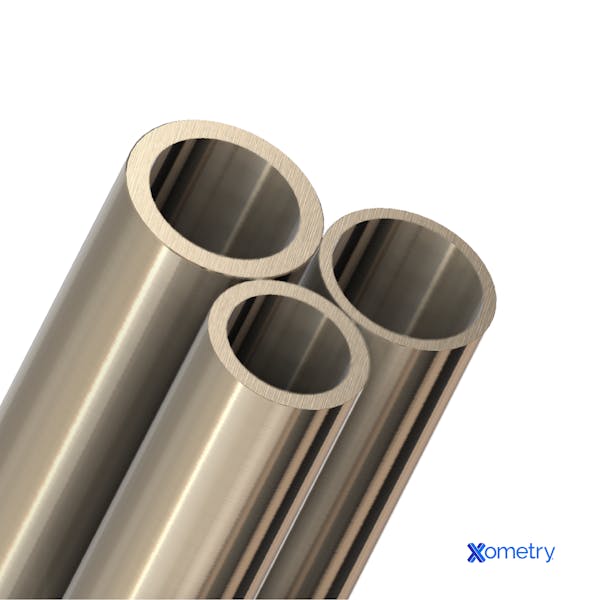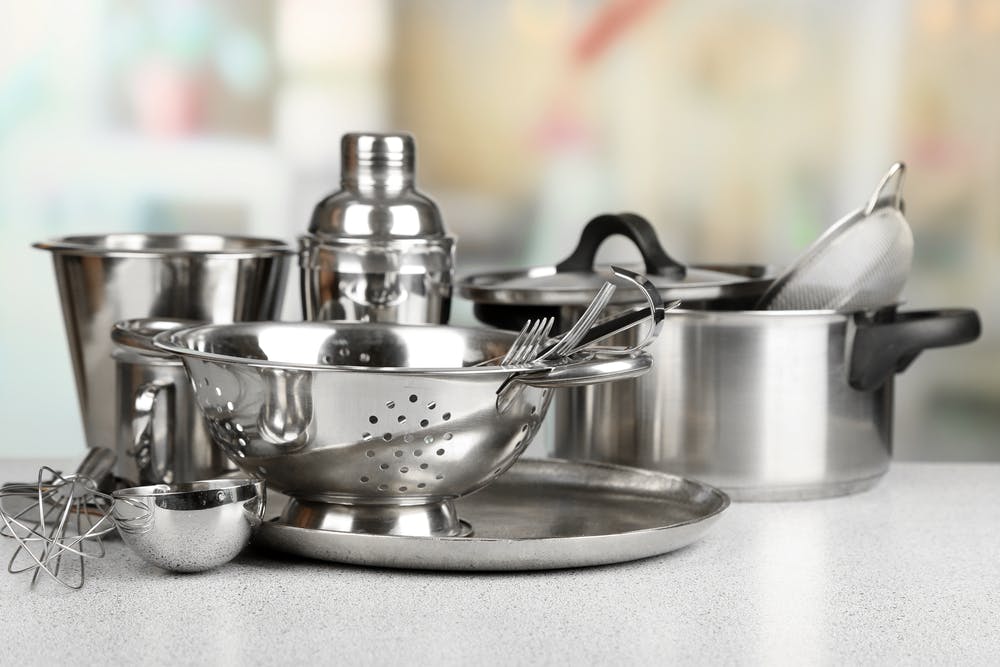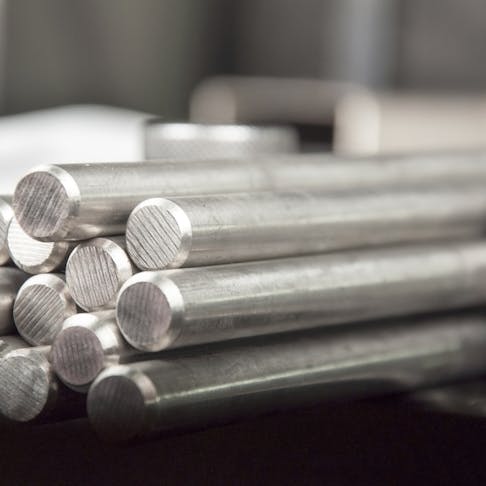Stainless steel and Monel may both be classed as alloys and even share many of the same characteristics, but their composition, uses, and strengths and weaknesses are quite different. This article is for all of our customers who want to know which alloy to use for their specific manufacturing needs. If you’d rather watch an explanation of these differences, playthe video below.
What is Monel?
Monel is an alloy that’s usually made up of 66% nickel and 31.5% copper, with trace amounts of manganese, carbon, iron, and silicon. It isn’t made with traditional direct ore smelting methods, but rather with precise computerized control in air induction furnaces. Its specific composition makes Monel extra strong but also gives it its greatest attribute by far: remarkable corrosion resistance. It can hold its own in corrosive environments and high heat, and won’t deform or lose its structure. You can weld with it, and it’s also non-magnetic.
Many industries, especially chemical and hydrocarbon processing, have cottoned on to this alloy’s extraordinary features, and use it to make everything from fittings to heat exchangers. Like most metals, it has a shiny surface, but its slightly yellow color is quite distinct, as you can see in the picture below:

There are a few caveats, though. If Monel comes in contact with a different metal and an electrolyte, it could experience galvanic corrosion due to the electrical interaction between the metals (kind of like how a good apple can start to rot next to a bad one). While it does have good heat resistance, it is not as high as some other alloys, and its density means it won’t be suitable for making lightweight objects. To machine Monel, you’ll need specialized processes and tools. It’s also not as readily available as some other materials, so you might yourself struggling to get a hold of some.
Monel Types
There are a few different types of Monel, a few of which we list below:
- Monel 400 (Phyweld 400 or Nicorros LC): Used a lot in chemical and marine applications
- Monel 401: Great for self-fusing and resistance welding (even though it was originally designed for specialized electronics)
- Monel 404: Used in electronics thanks to its good brazing qualities and low Curie temperature
- Monel 405 (Monel R405): A free-machining grade used to make components that need to be seawater resistant
- Monel 502: An easily machinable type, with good creep and oxidation resistance
- Monel K-500: Ideal for oil-well drill collars and marine pump shafts.
What is Stainless Steel?
Stainless steel is arguably the most well-known and used alloy (if you look around you, we’ll bet you’ll find something made from it within a few seconds). It’s sometimes called “inox” or rustless steel and is made of around 70–80% iron, with at least 10.5% chromium for the protective oxide layer bonus. It also has around 1.2% of carbon, as well as trace amounts of other elements like nickel and manganese, which all help to make it stronger, adaptable, more durable, and corrosion-resistant.
There are many different grades of stainless steel that can be made into everything from industrial machinery and construction equipment to kitchenware. Less ductile grades are used for things like knives and other utensils, while more ductile grades are used for saucepans, sinks, grills, and other cookware, like in the image below:

As you can see, stainless steel has that typical metal look, is most often silvery in color, and super shiny. It’s not only its good looks that make it a go-to for homewares; it’s also considered a hygienic material because its nonporous surface is easy to keep clean. This also makes it good for medical equipment.
As much as we’d like to use it for everything, stainless steel isn’t ideal for lightweight products because it has a good amount of heft to it. It’s hard to cold work, can be annoyingly magnetic in some grades, and, although it will last practically forever, it’s not immune to the odd scratch or dent. It’s also more expensive than some other materials.
Stainless Steel Types
If you have some time on your hands to learn about all the different stainless steel types and grades (there are over 100!), you can read all about them in our detailed guide. In the meantime, here are some of the common ones:
- Austenitic (304 and 316): The most popular type, with great corrosion resistance and non-magnetic properties
- Low-carbon ferritic (409 and 430): Often used in automotive and architectural industries, but are less hardenable than other types
- Austenitic-ferritic: Also known as “duplex”, these combine all the good stuff from the two types in the name, and are ideal for chemical processing
- Martensitic: Strong and durable, can be hardened by heat-treatment, and is used in surgical tools and cutlery
- Precipitation-hardened: One of the strongest options, commonly used to make aerospace parts.
Monel vs. Stainless Steel
To choose between these two alloys for your manufacturing needs, you’ll need to know their exact properties, which is why we made you the table below.
| Property | Monel | Stainless Steel |
|---|---|---|
Property Composition | Monel Nickel, copper | Stainless Steel Chromium, iron |
Property Corrosion resistance | Monel Excellent | Stainless Steel Good |
Property Mechanical properties (MPa) | Monel 480–1,000 | Stainless Steel 380–1,310 |
Property Tensile strength (MPa) | Monel 700 (for Monel K500) | Stainless Steel 550 (for 316 stainless steel) |
Property Operating temperature | Monel -100–550°C | Stainless Steel -250–790°C |
Property Melting point | Monel 1,300–1,350°C | Stainless Steel 1,400–1,350°C |
Property Density (g/cm³) | Monel 8.8 | Stainless Steel 7.85 |
Property Hardness (HRC) | Monel 20–85 | Stainless Steel 28–40 |
Property Magnetic Properties | Monel Not magnetic | Stainless Steel Can be magnetic |
Property Ductility | Monel Excellent | Stainless Steel Good |
Property Durability | Monel Excellent | Stainless Steel Good, varies by grade |
Property Machinability | Monel Excellent | Stainless Steel Fair |
Property Cost | Monel More expensive | Stainless Steel Less expensive |
Property Availability | Monel Scarce | Stainless Steel Readily available |
Table 1: Properties of Monel and Stainless Steel
How Xometry Can Help
We hope our article has helped you learn more about these two alloys and gotten you closer to making a decision on which one to use in your business. Xometry offers many different services around Monel and stainless steel, including metal stamping, laser cutting, powder coating, and metal extrusion. If you want to learn more or have any questions, reach out to one of our representatives, or, go straight in for your free, no-obligation quote.
Copyright and Trademark Notice
- Monel® is a trademark of Special Metals Corporation
Disclaimer
The content appearing on this webpage is for informational purposes only. Xometry makes no representation or warranty of any kind, be it expressed or implied, as to the accuracy, completeness, or validity of the information. Any performance parameters, geometric tolerances, specific design features, quality and types of materials, or processes should not be inferred to represent what will be delivered by third-party suppliers or manufacturers through Xometry’s network. Buyers seeking quotes for parts are responsible for defining the specific requirements for those parts. Please refer to our terms and conditions for more information.


